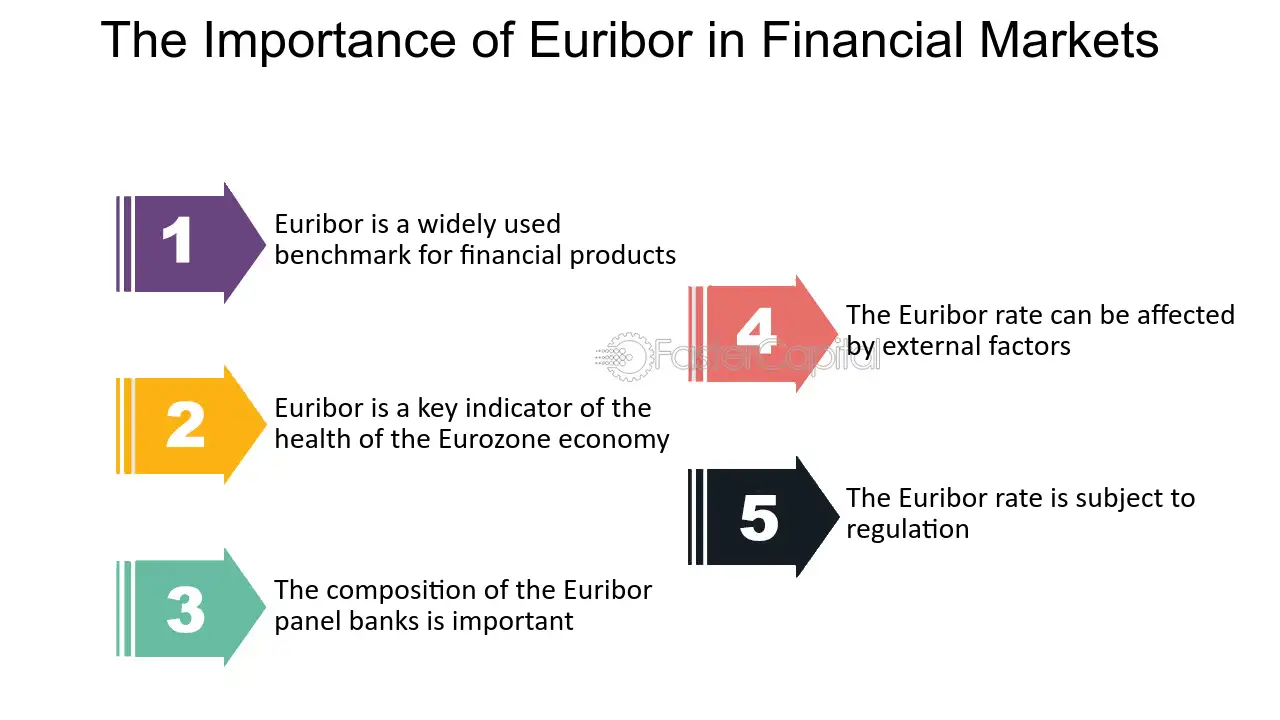The Rise of Euribor: What It Means for Homeowners, Borrowers, and the Economy

In recent months, many borrowers in the Eurozone have experienced rising costs due to an increase in the Euribor (Euro Interbank Offered Rate). This benchmark interest rate, which determines the cost of borrowing between European banks, has a significant impact on various financial products, especially variable-rate loans and mortgages. With the recent upward trend in the Euribor, it’s essential to understand its implications on both the personal finances of households and the broader economy.
What is Euribor?
Euribor, short for Euro Interbank Offered Rate, is the rate at which European banks lend money to one another in euros for short periods (ranging from one week to one year). It serves as the reference rate for a wide variety of financial products, including mortgages, loans, and derivatives.
Euribor is critical because it affects the interest rates that consumers and businesses pay on loans, especially variable-rate loans. When Euribor rises, so do the rates on variable mortgages, credit cards, and personal loans. Conversely, when Euribor falls, borrowing becomes cheaper, as the interest rates on these products decrease.
Why Has Euribor Been Rising?
The recent surge in Euribor rates is largely attributed to actions taken by the European Central Bank (ECB) in an effort to curb inflation across the Eurozone. Over the past couple of years, inflation has been a significant issue, largely driven by energy price hikes, supply chain disruptions, and other global economic factors, including the aftermath of the COVID-19 pandemic and the war in Ukraine.
To tackle this inflationary pressure, the ECB has been steadily increasing its key interest rates. By raising the cost of borrowing for banks, the ECB aims to reduce consumer spending and business investment, thereby cooling down the economy and driving inflation back to its target level of around 2%. As a result, Euribor, which is closely linked to ECB policy rates, has also risen, reflecting the tightening of monetary policy.
The rise in Euribor follows a period of historically low rates. In the aftermath of the global financial crisis of 2008, and more recently during the pandemic, interest rates across the Eurozone were kept at record lows to stimulate economic activity. However, as inflation surged in 2022 and beyond, the ECB reversed course, initiating a series of rate hikes to bring inflation under control.
The Impact of a Rising Euribor
1. Higher Borrowing Costs for Consumers
For homeowners with variable-rate mortgages, a rise in Euribor directly translates into higher monthly payments. This is because many mortgages in the Eurozone are tied to https://finanzasdomesticas.com/euribor-sube as a reference rate. When Euribor goes up, so does the interest rate on these loans. As a result, many borrowers are facing increased financial pressure as their monthly repayments rise.
For example, a homeowner with a mortgage tied to a 12-month Euribor rate could see their payments increase significantly if the benchmark rate rises by even a small amount. This can create a burden for households, especially in countries where housing markets have been booming in recent years, and people have taken on larger mortgages.
2. Impact on Personal Loans and Credit Cards
It’s not just mortgages that are affected by Euribor. Many personal loans and credit card interest rates are also linked to this benchmark. A rise in Euribor means that the cost of borrowing through personal loans or credit cards will increase. This is likely to reduce consumers’ purchasing power, as they will need to pay more in interest on their existing debt.
Higher borrowing costs could discourage individuals from taking out loans for big-ticket items, such as cars or home improvements. It could also lead to an increase in default rates, as borrowers who are already struggling with debt may find it more difficult to make ends meet.
3. Pressure on Businesses
For businesses that rely on bank loans to finance their operations or expansion plans, a higher Euribor rate increases the cost of borrowing. Companies with variable-rate loans may face higher repayments, which could reduce their ability to invest in growth or hire new employees. Smaller businesses, in particular, may be more vulnerable to these changes, as they often have less financial flexibility compared to larger corporations.
Higher borrowing costs could also dampen consumer demand, as individuals cut back on spending due to increased living costs. This, in turn, could slow down economic growth, particularly in sectors that are highly sensitive to consumer spending, such as retail and hospitality.
4. Implications for Savings and Investments
On the flip side, a rising Euribor can be beneficial for savers. As Euribor increases, the interest rates offered by banks on savings accounts, term deposits, and other financial products are likely to rise as well. This gives savers an opportunity to earn more on their deposits, especially in an environment where inflation has been eroding the value of cash savings.
For investors, higher Euribor rates often lead to higher yields on government bonds and other fixed-income investments. However, stock markets may react negatively to rising interest rates, as higher borrowing costs can reduce corporate profits and lead to slower economic growth. Thus, investors will need to carefully assess their portfolios to determine how the rising Euribor might impact their investment strategy.
What Can Borrowers Do to Manage Rising Euribor Rates?
For those with variable-rate loans or mortgages, the rise in Euribor rates may be a cause for concern. However, there are several strategies that borrowers can consider to manage the impact:
- Refinancing to a Fixed Rate: One option for homeowners is to refinance their mortgage from a variable-rate to a fixed-rate loan. While this may involve higher interest rates in the short term, it provides predictability and stability in monthly payments over the long term.
- Extra Repayments: Borrowers who can afford to do so might consider making extra payments toward their loan principal. This can help reduce the overall loan balance and lessen the impact of rising interest rates.
- Consolidating Debt: For individuals with multiple loans or credit card balances, consolidating debt into a single loan with a lower interest rate can be a good strategy to reduce overall borrowing costs.
- Reviewing Budget: With rising interest costs, it’s important for households to reassess their budgets and cut back on non-essential spending. By managing expenses more efficiently, borrowers can free up more money to cover the higher repayments.
Conclusion
The rise in Euribor is a reflection of broader economic trends in the Eurozone, driven by the European Central Bank’s actions to combat inflation. While this increase in borrowing costs presents challenges for consumers and businesses, it also presents opportunities for savers and investors. Understanding the dynamics of Euribor and its implications can help individuals and companies better navigate the changing financial landscape.
For those directly impacted by rising Euribor rates, taking proactive measures such as refinancing, reducing debt, or adjusting spending habits can help mitigate some of the financial pressure. Ultimately, the key to managing a higher Euribor environment is flexibility, careful planning, and a focus on long-term financial health.


